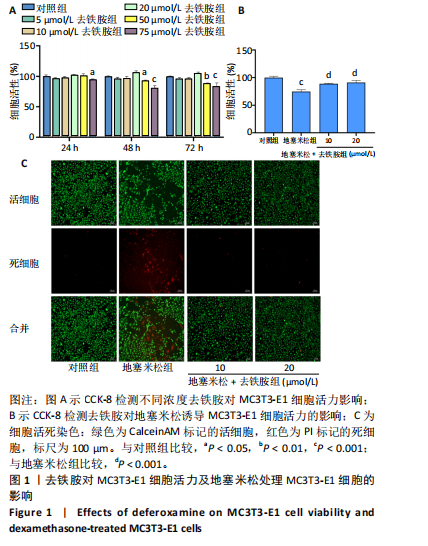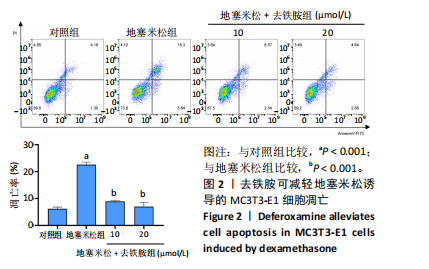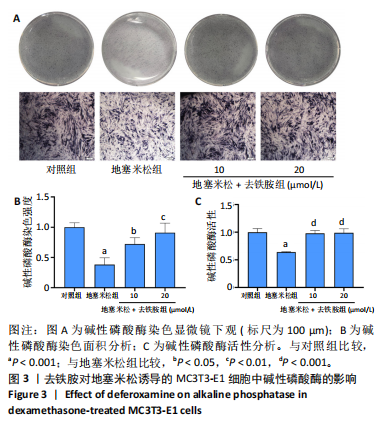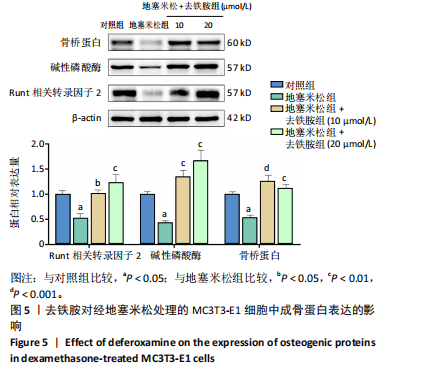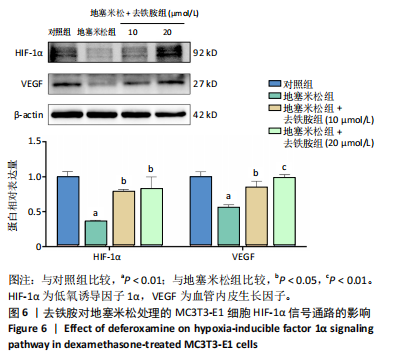[1] XUE XH, FENG ZH, LI ZX, et al. Salidroside inhibits steroid-induced avascular necrosis of the femoral head via the PI3K/Akt signaling pathway: In vitro and in vivo studies. Mol Med Rep. 2018;17(3):3751-3757.
[2] QI B, LI C, CAI X, et al. Bioinformatics-Based Analysis of Key Genes in Steroid-Induced Osteonecrosis of the Femoral Head That Are Associated with Copper Metabolism. Biomedicines. 2023;11(3):873.
[3] CHANG C, GREENSPAN A, GERSHWIN ME. The pathogenesis, diagnosis and clinical manifestations of steroid-induced osteonecrosis. J Autoimmun. 2020;110:102460.
[4] HUANG C, WEN Z, NIU J, et al. Steroid-Induced Osteonecrosis of the Femoral Head: Novel Insight Into the Roles of Bone Endothelial Cells in Pathogenesis and Treatment. Front Cell Dev Biol. 2021;9:777697.
[5] MOTTA F, TIMILSINA S, GERSHWIN ME, et al. Steroid-induced osteonecrosis. J Transl Autoimmun. 2022;5:100168.
[6] WANG A, REN M, WANG J. The pathogenesis of steroid-induced osteonecrosis of the femoral head: A systematic review of the literature. Gene. 2018;671:103-109.
[7] WANG T, AZEDDINE B, MAH W, et al. Osteonecrosis of the femoral head: genetic basis. Int Orthop. 2019;43(3):519-530.
[8] ZHANG J, CAO J, LIU Y, et al. Advances in the Pathogenesis of Steroid-Associated Osteonecrosis of the Femoral Head. Biomolecules. 2024;14(6):667.
[9] HAN Y, YOU X, XING W, et al. Paracrine and endocrine actions of bone-the functions of secretory proteins from osteoblasts, osteocytes, and osteoclasts. Bone Res. 2018;6:16.
[10] SAWA N, FUJIMOTO H, SAWA Y, et al. Author Correction: Alternating Differentiation and Dedifferentiation between Mature Osteoblasts and Osteocytes. Sci Rep. 2020;10(1):21788.
[11] SUN F, ZHOU JL, LIU ZL, et al. Dexamethasone induces ferroptosis via P53/SLC7A11/GPX4 pathway in glucocorticoid-induced osteonecrosis of the femoral head. Biochem Biophys Res Commun. 2022;602:149-155.
[12] ZHANG J, CAO J, LIU Y, et al. Advances in the Pathogenesis of Steroid-Associated Osteonecrosis of the Femoral Head. Biomolecules. 2024;14(6):667.
[13] MA Z, SUN J, JIANG Q, et al. Identification and analysis of mitochondria-related central genes in steroid-induced osteonecrosis of the femoral head, along with drug prediction. Front Endocrinol (Lausanne). 2024;15:1341366.
[14] YANG C, ZHONG ZF, WANG SP, et al. HIF-1: structure, biology and natural modulators. Chin J Nat Med. 2021;19(7):521-527.
[15] MENG X, LIN Z, CAO S, et al. Estrogen-mediated downregulation of HIF-1α signaling in B lymphocytes influences postmenopausal bone loss. Bone Res. 2022;10(1):15.
[16] LEE SY, KIM SJ, PARK KH, et al. Differential but complementary roles of HIF-1α and HIF-2α in the regulation of bone homeostasis. Commun Biol. 2024;7(1):892.
[17] YI L, JU Y, HE Y, et al. Intraperitoneal injection of Desferal® alleviated the age-related bone loss and senescence of bone marrow stromal cells in rats. Stem Cell Res Ther. 2021;12(1):45.
[18] CHEN W, WU P, YU F, et al. HIF-1α Regulates Bone Homeostasis and Angiogenesis, Participating in the Occurrence of Bone Metabolic Diseases. Cells. 2022;11(22):3552.
[19] GUO Q, YANG J, CHEN Y, et al. Salidroside improves angiogenesis-osteogenesis coupling by regulating the HIF-1α/VEGF signalling pathway in the bone environment. Eur J Pharmacol. 2020;884:173394.
[20] LIU Y, LIU J, CAI F, et al. Hypoxia During the Consolidation Phase of Distraction Osteogenesis Promotes Bone Regeneration. Front Physiol. 2022;13:804469.
[21] GROSSO A, LUNGER A, BURGER MG, et al. VEGF dose controls the coupling of angiogenesis and osteogenesis in engineered bone. NPJ Regen Med. 2023; 8(1):15.
[22] ZHA Y, LI Y, LIN T, et al. Progenitor cell-derived exosomes endowed with VEGF plasmids enhance osteogenic induction and vascular remodeling in large segmental bone defects. Theranostics. 2021;11(1):397-409.
[23] LI B, LEI Y, HU Q, et al. Porous copper- and lithium-doped nano-hydroxyapatite composite scaffold promotes angiogenesis and bone regeneration in the repair of glucocorticoids-induced osteonecrosis of the femoral head. Biomed Mater. 2021;16(6):10.1088/1748-605X/ac246e.
[24] MA T, WANG Y, MA J, et al. Research progress in the pathogenesis of hormone-induced femoral head necrosis based on microvessels: a systematic review. J Orthop Surg Res. 2024;19(1):265.
[25] ZHU Y, CHANG B, PANG Y, et al. Advances in Hypoxia-Inducible Factor-1α Stabilizer Deferoxamine in Tissue Engineering. Tissue Eng Part B Rev. 2023;29(4):347-357.
[26] YELLOWLEY CE, GENETOS DC. Hypoxia Signaling in the Skeleton: Implications for Bone Health. Curr Osteoporos Rep. 2019;17(1):26-35.
[27] CLINKENBEARD EL, HANUDEL MR, STAYROOK KR, et al. Erythropoietin stimulates murine and human fibroblast growth factor-23, revealing novel roles for bone and bone marrow. Haematologica. 2017;102(11):e427-e430.
[28] ZHANG H, YANG F, CAO Z, et al. The influence of iron on bone metabolism disorders. Osteoporos Int. 2024;35(2):243-253.
[29] CHENG W, DING Z, ZHENG X, et al. Injectable hydrogel systems with multiple biophysical and biochemical cues for bone regeneration. Biomater Sci. 2020;8(9): 2537-2548.
[30] YAN Y, CHEN H, ZHANG H, et al. Vascularized 3D printed scaffolds for promoting bone regeneration. Biomaterials. 2019;190-191:97-110.
[31] YANG H, NIE S, ZHOU C, et al. Palliative effect of rotating magnetic field on glucocorticoid-induced osteonecrosis of the femoral head in rats by regulating osteoblast differentiation. Biochem Biophys Res Commun. 2024;725:150265.
[32] LUO H, WEI J, WU S, et al. Elucidating the role of the GC/GR/GLUT1 axis in steroid-induced osteonecrosis of the femoral head: A proteomic approach. Bone. 2024;183:117074.
[33] REZUS E, TAMBA BI, BADESCU MC, et al. Osteonecrosis of the Femoral Head in Patients with Hypercoagulability-From Pathophysiology to Therapeutic Implications. Int J Mol Sci. 2021;22(13):6801.
[34] YOON BH, JONES LC, CHEN CH, et al. Etiologic Classification Criteria of ARCO on Femoral Head Osteonecrosis Part 1: Glucocorticoid-Associated Osteonecrosis.J Arthroplasty. 2019;34(1):163-168.e1.
[35] HUANG C, QING L, XIAO Y, et al. Insight into Steroid-Induced ONFH: The Molecular Mechanism and Function of Epigenetic Modification in Mesenchymal Stem Cells. Biomolecules. 2023;14(1):4.
[36] MALHOTRA R, GUPTA S, GUPTA V, et al. Risk Factors and Outcomes Associated with Intraoperative Fractures during Short-Stem Total Hip Arthroplasty for Osteonecrosis of the Femoral Head. Clin Orthop Surg. 2022;14(1):41-47.
[37] MILADI M, VILLAIN B, MEBTOUCHE N, et al. Interest of short implants in hip arthroplasty for osteonecrosis of the femoral head: comparative study “uncemented short” vs “cemented conventional” femoral stems. Int Orthop. 2018;42(7):1669-1674.
[38] MARTZ P, MACZYNSKI A, ELSAIR S, et al. Total hip arthroplasty with dual mobility cup in osteonecrosis of the femoral head in young patients: over ten years of follow-up. Int Orthop. 2017;41(3):605-610.
[39] SCHEPPER JD, COLLINS F, RIOS-ARCE ND, et al. Involvement of the Gut Microbiota and Barrier Function in Glucocorticoid-Induced Osteoporosis. J Bone Miner Res. 2020;35(4):801-820.
[40] XU S, GUO R, LI PZ, et al. Dexamethasone interferes with osteoblasts formation during osteogenesis through altering IGF-1-mediated angiogenesis. J Cell Physiol. 2019;234(9):15167-15181.
[41] KHOSHLAHNI N, SAGHA M, MIRZAPOUR T, et al. Dexamethasone interferes with osteoblasts formation during osteogenesis through altering IGF-1-mediated angiogenesis. J Cell Physiol. 2019;234(9):15167-15181.
[42] PENG L, WU F, CAO M, et al. Effects of different physical factors on osteogenic differentiation. Biochimie. 2023;207:62-74.
[43] DORNELAS J, DORNELAS G, ROSSI A, et al. The Incorporation of Zinc into Hydroxyapatite and Its Influence on the Cellular Response to Biomaterials: A Systematic Review. J Funct Biomater. 2024;15(7):178.
[44] MOLLENTZE J, DURANDT C, PEPPER MS. An In Vitro and In Vivo Comparison of Osteogenic Differentiation of Human Mesenchymal Stromal/Stem Cells. Stem Cells Int. 2021;2021:9919361.
[45] KOMORI T. Whole Aspect of Runx2 Functions in Skeletal Development. Int J Mol Sci. 2022;23(10):5776.
[46] HA SH, CHOUNG PH. Whole Aspect of Runx2 Functions in Skeletal Development. Int J Mol Sci. 2022;23(10):5776.
[47] LIU Z, HUANG L, QI L, et al. Activating Angiogenesis and Immunoregulation to Propel Bone Regeneration via Deferoxamine-Laden Mg-Mediated Tantalum Oxide Nanoplatform. ACS Appl Mater Interfaces. 2024;16(19):24384-24397.
[48] PENG Y, WU S, LI Y, et al. Type H blood vessels in bone modeling and remodeling. Theranostics. 2020;10(1):426-436.
[49] GAO W, HE R, REN J, et al. Exosomal HMGB1 derived from hypoxia-conditioned bone marrow mesenchymal stem cells increases angiogenesis via the JNK/HIF-1α pathway. FEBS Open Bio. 2021;11(5):1364-1373.
[50] WU D, LIU L, FU S, et al. Osteostatin improves the Osteogenic differentiation of mesenchymal stem cells and enhances angiogenesis through HIF-1α under hypoxia conditions in vitro. Biochem Biophys Res Commun. 2022;606:100-107.
[51] ZHANG Y, HAO Z, WANG P, et al. Exosomes from human umbilical cord mesenchymal stem cells enhance fracture healing through HIF-1α-mediated promotion of angiogenesis in a rat model of stabilized fracture. Cell Prolif. 2019; 52(2):e12570.
[52] HAMUSHAN M, CAI W, ZHANG Y, et al. High-purity magnesium pin enhances bone consolidation in distraction osteogenesis model through activation of the VHL/HIF-1α/VEGF signaling. J Biomater Appl. 2020;35(2):224-236.
[53] LANG A, STEFANOWSKI J, PFEIFFENBERGER M, et al. MIF does only marginally enhance the pro-regenerative capacities of DFO in a mouse-osteotomy-model of compromised bone healing conditions. Bone. 2022;154:116247. |
